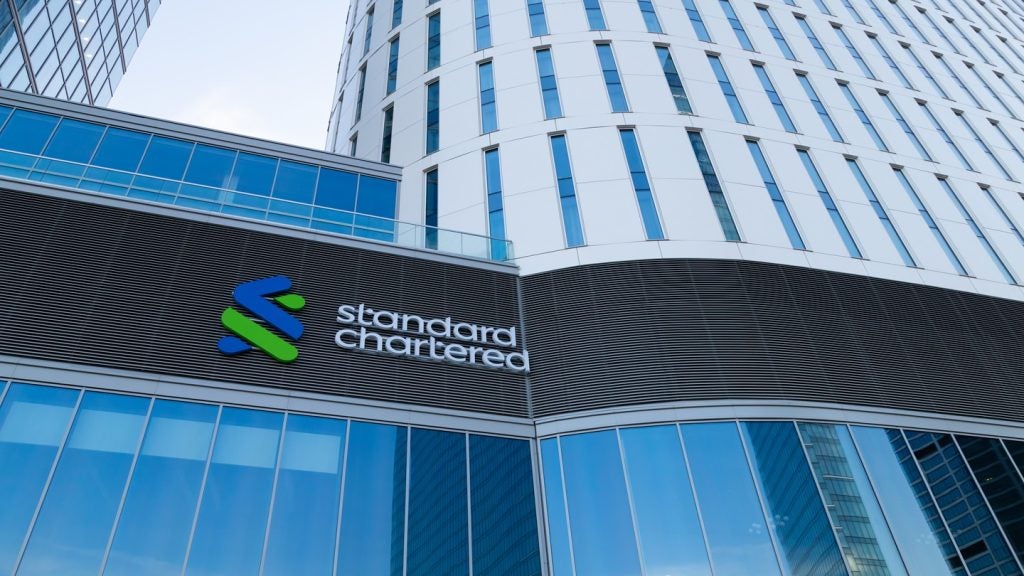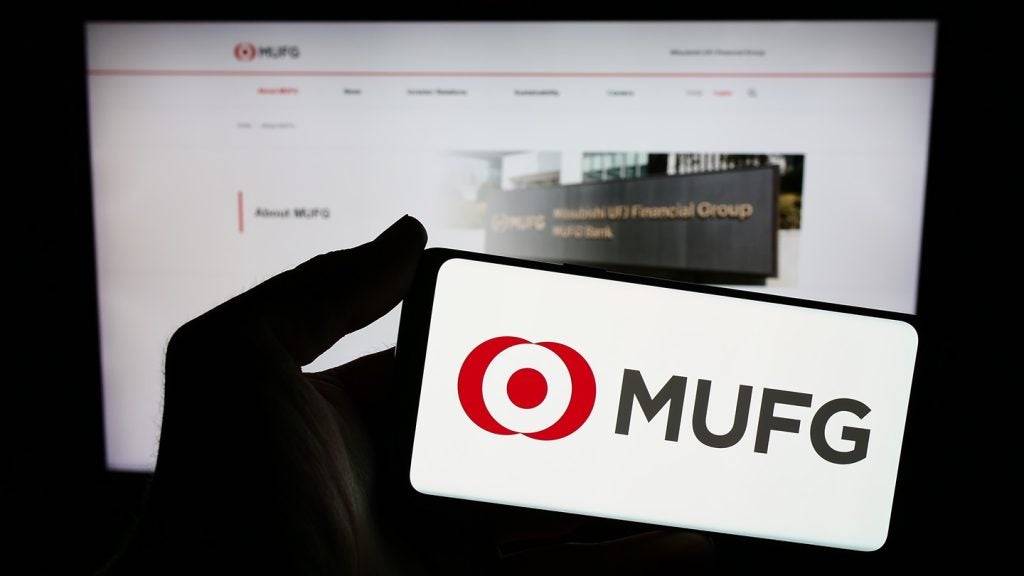As private banking gains prominence in Asia-Pacific, numerous
domestic banks are vying for market share and attempting to break
international private banks’ traditional dominance in the
field. PBI highlights those best positioned to
grow along with the rising wealth in the region.
The source of wealth in Asia-Pacific is largely from entrepreneurs
and, unsurprisingly, the more successful private banking businesses
come from local banks with strengths in corporate and/or investment
banking.
How well do you really know your competitors?
Access the most comprehensive Company Profiles on the market, powered by GlobalData. Save hours of research. Gain competitive edge.

Thank you!
Your download email will arrive shortly
Not ready to buy yet? Download a free sample
We are confident about the unique quality of our Company Profiles. However, we want you to make the most beneficial decision for your business, so we offer a free sample that you can download by submitting the below form
By GlobalDataThe crisis seems to have given an opportunity for the local banks
to blossom further as clients seek refuge in their established
brand names, entrenched local or regional networks and conservative
balance sheet management.
Although by no means an exhaustive list, these Asian wealth
managers are ones to look out for as they ride the region’s
growth.
Banco de Oro, Philippines
Banco de Oro, Philippines’ largest local bank in terms of assets,
loans and deposits, was founded by local magnate Henry Sy Sr, the
largest owner and developer of shopping centres in the Philippines.
Its wealth management arm, Banco de Oro (BDO) Private Bank targets
the traditionally wealthy, modern affluent and retirees.
The parent bank has been on an acquisition spree, buying up assets
from Dao Heng, UOB, GE Money and local banks such as First E-Bank
and Equitable PCI but its most significant acquisition for its
private banking business was the assets of American Express which
had a strong niche in the high-end credit card business with
balances and spending levels higher than the average
customer.
BDO Private Bank has also seen a flight to safety towards the bank,
according to Josefina N Tan, president of BDO Private Bank.
“Clients have lost at least 40 percent of capital from funds that
have been managed offshore. The global financial crisis has
resulted in the reverse flow of investment capital,” Tan
said.
“Philippino clients are looking at sound, reputable and strong
financial institutions in the Philippines to manage their domestic
wealth as well as provide a safe haven for wealth that has been
managed previously offshore. BDO Private Bank has benefitted
greatly by being one of the choice banks for the consolidation and
protection of wealth.”
China Merchants Bank, China
In China, domestic banks face stiff competition from foreign banks
that can offer more geographically diverse investment opportunities
for China’s wealthy onshore (see PBI 249).
However, with an estimated 80 percent of assets still held onshore,
the market is attractive for both local and foreign banks alike.
China Merchants Bank is widely recognised as one of the more
sophisticated local banks on the mainland and has built an online
service to reach out to the affluent customer base.
Although it has the best range of products in the market, a recent
Celent report pointed out that the bank’s products have
underperformed those of its rivals.
The bank has global expansion plans and will use money raised in a
recent share issue in Hong Kong and Shanghai to expand its branch
network, starting with one in London.
To help it understand the local market better, China Merchants Bank
collaborated with research house Bain & Company for an in-depth
look at China’s private banking market and found that customers
regard joint-stock banks such as China Merchants Bank to be more
reliable than foreign banks and more advanced than the Big Four
state banks.
The research also found that 70 percent of China’s high net worth
individuals are more cautious about dealing with foreign-owned
banks and a sizeable group will either not choose foreign banks for
the next one to two years or will switch to a local bank. These
factors will all positively contribute to the potential growth in
the bank.
Chinatrust, Taiwan
Taiwan offers the third-largest wealth management market in the
region and the number of high net worth individuals is expected to
double from 2009 to 2012 with improved China-Taiwan relations.
According to central bank statistics, net inflow of funds into
Taiwan totaled US$4.65 billion in the second quarter of 2009 – the
highest level since 1985.
International banks such as HSBC, UBS, Citibank and Standard
Chartered Bank are already active in the market and competition is
stiff.
However, with the largest customer base in Taiwan at more than four
million customers, Chinatrust is in an excellent position to tap
the local wealthy. Some 80 percent of its wealth management
customers come from its existing customer base and the bank expects
its market share of the wealth management market to reach 20
percent by 2010.
It differentiates its wealthy customer base into three tiers and
offers a different product and service proposition for each tier.
Clients with investable assets of TW$1 million ($31,000) to TW$3
million are classified as VIP-to-be while those with TW$3 million
to TW$15 million are classified as VIPs. Those with more than TW$15
million are the Super VIPs and deal with the most experienced and
senior financial advisers with tailored products.
CIMB, Malaysia
The majority of CIMB’s clients are Malaysians with an average of
$500,000 in onshore investable assets. MYR1 million ($144,000)
qualifies clients for advisory portfolio management while MYR2
million qualifies for discretionary portfolio management.
With one of the largest retail banking operations and a highly
successful investment banking business in the peninsula, CIMB is
well-positioned to leverage these two strengths and maintains a
financial adviser to client ratio of 1:53.
“With the recent financial crisis, clients preferring to invest in
local banks saw the retail banking solution as a timely offering
that provided them not only the convenience of a seamless banking
experience but the security of having their investments and assets
placed directly under their own names,” said Carolyn Leng, co-head
for CIMB Private Banking.
“A fully dedicated credit unit was set up to structure, customise
and process credit or loan facilities for private banking clients,”
Leng highlighted.
“With the unit, we are able to pay special attention to meeting our
clients’ credit needs and growing our loan book, creating an
additional revenue stream, offering an additional service to
clients and helping clients enhance their returns.”
The global crisis has also helped CIMB’s case, as Leng pointed out:
“The market downturn was an ideal time for us to actively acquire
new clients, who in turn are searching for new relationship
managers and investment ideas. This is coupled by the fact that
investors today are turning to local banks after being burnt by
foreign banks’ exposure to toxic assets and looking for
diversification.”
The aggressive expansion of its parent bank, CIMB Group, through
acquisitions of sizeable local institutions in Indonesia, Singapore
and Thailand provides a regional platform for the bank to further
develop its wealth management offering.
CITIC Ka Wah, Hong Kong
Even though the minimum threshold of investible assets to qualify
as a CITICfirst customer is HK$1 million ($129,000), their current
customer base has an average asset under management (AUM) size of
HK$3 million. In three years since its launch, CITIC amassed HK$37
billion in assets under management and 13,700 clients. Hong Kong
and Singapore were two Asian markets that were most affected by the
global crisis.
Zoe Lau, head of wealth management for CITIC Ka Wah, said: “We need
to provide time-to-market offerings including more
capital-protected and fixed-rate products, more annuity and
traditional endowment insurance plans rather than investment
linked. For equity-linked products, [we need to offer] more
defensive structures, single-stock instead of basket and also fixed
coupon.”
Tapping on its retail banking base, CITICfirst is positioned as
“offering the convenience of retail premium banking services with
the products and services of private banking.”
Kasikornbank, Thailand
Kasikornbank’s Signature Private Banking service targets clients
with at least THB50 million ($1.5 million).
Launched in July 2008, the bank’s investible assets under
management have increased by 60 percent and its high net worth
customer base has increased by 20 percent year-on-year. The bank
offers classic private banking services such as portfolio advisory
and private fund management in addition to advice on succession
planning, tax guidance, offshore services, real estate planning,
medical care and concierge services.
The bank requires its relationship managers to have a Master’s
degree in finance or business and certified by the Securities and
Exchange Commission of Thailand and is looking to lower its current
ratio of 65:1 in clients to relationship managers by hiring more
bankers.
As the fourth-largest lender in the Kingdom, the bank has more than
600 branches, which has helped the bank to facilitate not just
client acquisition but it also services such as real estate
planning for its private banking clientele.
Kotak Mahindra, India
Kotak Mahindra as a bank was hived off from its brokerage parent in
2003 but has since successfully penetrated into the retail banking
and wealth management market. Its private banking business has a
client base of more than 1,500 and has $2.8 billion assets under
management and is popular with local family businesses as with
other local outfits across the region.
In a recent roundtable organised by PBI in Mumbai, the sense of
optimism and anticipation was clear among private bankers there
with opportunities to expand for all.
Celent forecasts the Indian assets under management to be $1
trillion by 2012 although a third of the rich in India lost their
high net worth status in 2008 – the largest drop after Hong Kong –
because of a 52 percent fall in Indian shares.
Religare Macquarie, India
The joint venture (JV) between Australia’s Macquarie and local
financial institution, Religare has ambitious expansion plans in
the nascent Indian wealth management market.
The JV plans to quadruple its adviser numbers from 220 to 900 by
2012 and will hire 100 by end of 2009. Both partners are expected
to invest $20 million each in the next two to three years to tap on
the 20 percent annual growth of high net worth individuals in
India.
Religare, owned by the family that ran Ranbaxy Laboratories until
it was sold for up to $4.6 billion in June last year, has also
reportedly shown interest in acquiring ING’s Indian assets and also
some of AIG’s global assets. Religare has launched the Religare
Arts Initiative that will provide art advisory services in addition
to arts awareness programmes, creation of gallery space and
collaborations with local art and design schools on their
curriculum and resources.
NAB Private Bank (Australia)
National Australia Bank (NAB) has an estimated A$30.1 billion
($26.3 billion) in assets under management in its private banking
business, making it the biggest player in the Australian market.
The private bank recently acquired 80.1 percent of the Goldman
Sachs JBWere business, adding 22,000 clients and A$10 billion of
funds under management (included in the above figure).
“We have gone to great lengths over the past 12 to 18 months to
bring into the private bank the functions our clients require,”
Angela Mentis, who heads the business, told PBI earlier this year.
“We’re seeing the philanthropy piece, we’re seeing investment in
that, and estate planning and the investment side as clients have
different requirements over their life cycle.”
The private bank has 41,000 clients following its acquisition of
the Goldman business. It operates with an income threshold of A$2.5
million, which is in part a regulatory threshold distinguishing
between retail and more sophisticated investors who can be offered
more specialist investment products.
UOB, Singapore
With a minimum liquid asset threshold of S$1 million ($706,000),
UOB’s clientele is made up largely of business owners. UOB itself
is founded by Datuk Wee Keng Chiang in 1935 to cater to Chinese
businessmen.
“UOB Private Banking emphasises an integrated approach that
involves an understanding of the client’s personal
wealth management needs and his business needs, if he is an
entrepreneur,” said Wilson Aw, head of private banking at
UOB.
Its branches in Hong Kong, Malaysia, Thailand, Indonesia, China and
the Philippines ensure a regional presence and have been an
advantage in the global crisis.
Private banking, which is grouped together with consumer and
privilege banking, contributed to 38 percent of profit before tax
for the group. To tackle the issue of skills shortage in the
private banking industry, UOB collaborated with Singapore
Management University to develop a one-year advanced diploma
qualification in private banking that includes mentoring by senior
bank executives.








